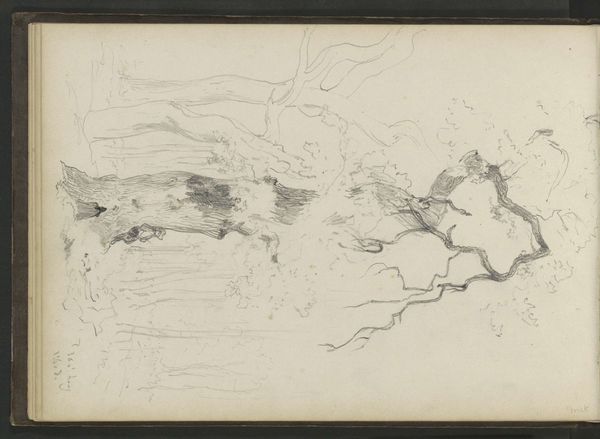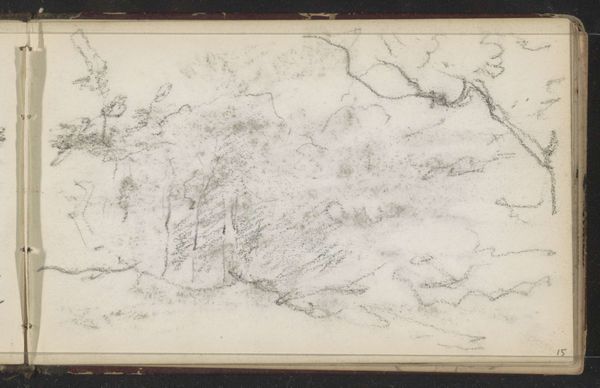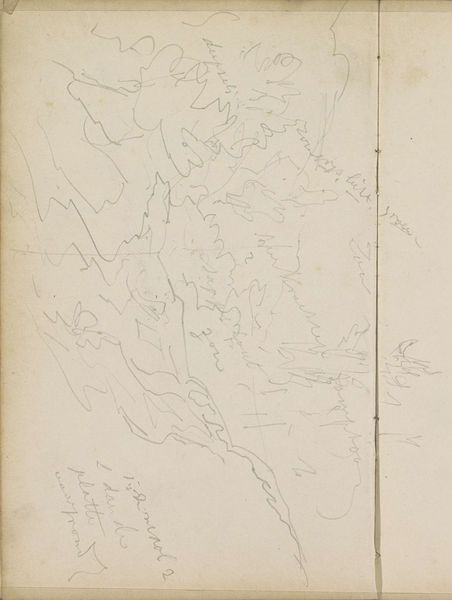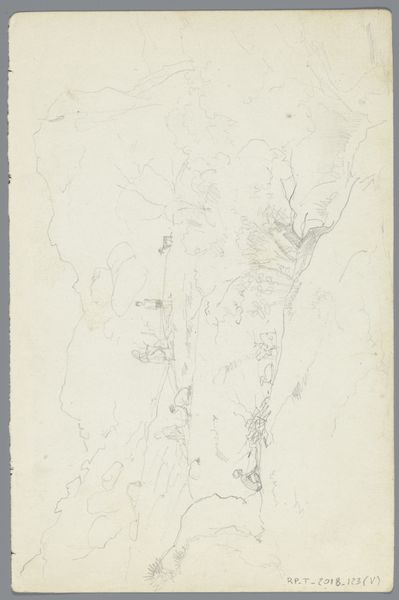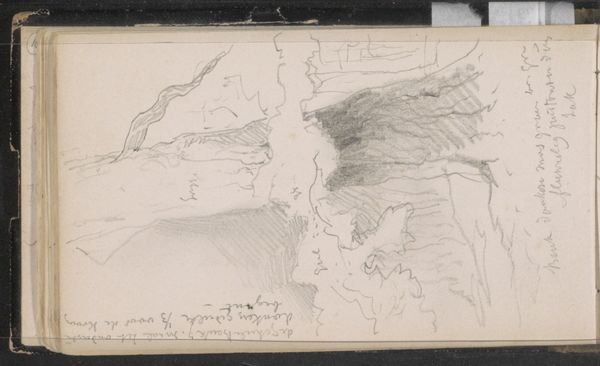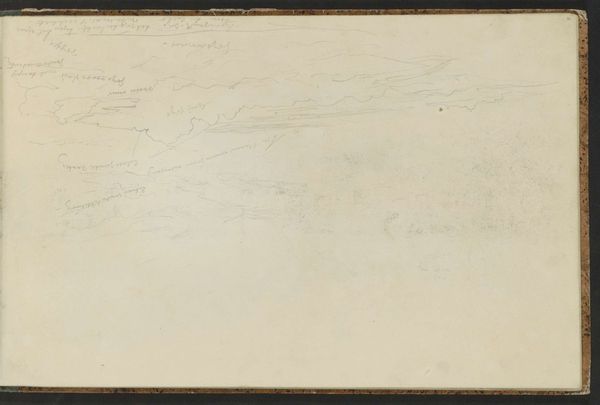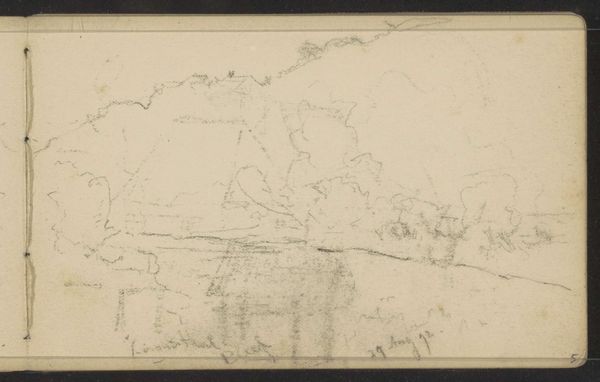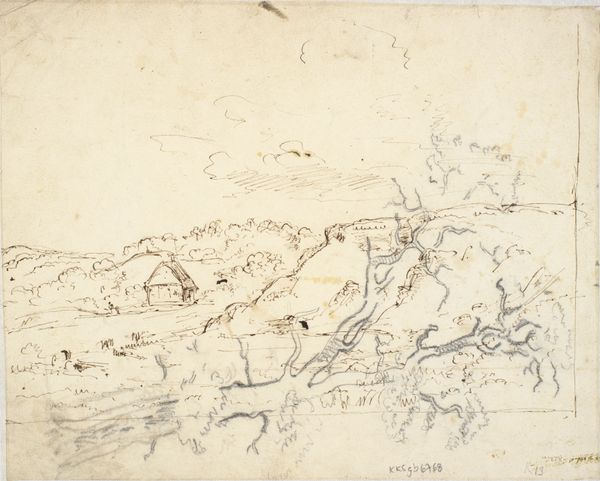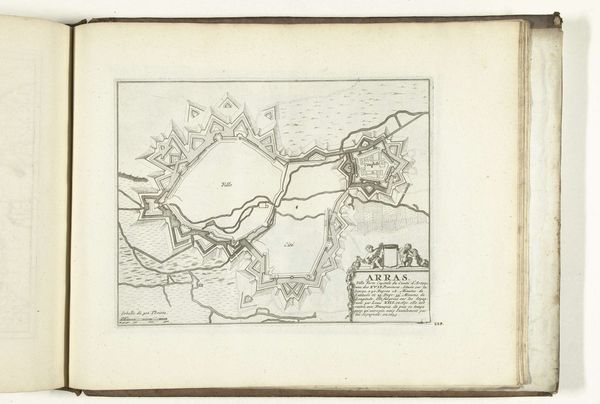
drawing, paper, pencil
#
drawing
#
organic
#
pen sketch
#
sketch book
#
incomplete sketchy
#
landscape
#
paper
#
personal sketchbook
#
sketchwork
#
ink drawing experimentation
#
pen-ink sketch
#
pencil
#
sketchbook drawing
#
watercolour illustration
#
academic-art
#
sketchbook art
#
realism
Copyright: Rijks Museum: Open Domain
Curator: Welcome. We're looking at a drawing called "Bladeren," which translates to "Leaves," made by Pierre Joseph Hubert Cuypers sometime between 1837 and 1921. It’s a study in pencil, pen and watercolor on paper. Editor: Ah, my first impression? It’s subtle, almost shy. The pale grey of the pencil lines, the faint impression of leaves layered on top of each other, like secrets whispered in a garden. A very delicate piece, if you ask me! Curator: Indeed. Cuypers' structural approach is evident, even in this sketch. Observe the deliberate rendering of the leaves—the detailed examination of their veining, the interplay of light and shadow suggesting form. This reveals his commitment to representational accuracy. Editor: Right, accuracy. But beyond the "accurate" depiction of botanical forms, there's something more. I feel a distinct moodiness in the faint rendering, a sort of yearning for detail. It's not just about leaves, it's about capturing a moment, the essence of natural growth. Almost reminds me of those hazy autumn afternoons. Curator: Certainly. And what's interesting is how this more informal sketch work still speaks to Cuypers' later architectural designs. If one were to deconstruct each leaf form, a direct application in gothic tracery might be conceived, or perhaps used in roof design and so on. Editor: A garden transforming into architecture. Yes, that tracks, beautifully. I now see the echoes of gothic cathedrals rising from this single sketchbook page. I mean, the discipline of observing and recreating nature eventually morphed into built form. Pretty cool, right? Curator: Precisely. Cuypers used sketches such as these as a springboard to envision more structural works of his own, a way of reconciling formal analysis and pure uninhibited imagination, using elements found in nature. Editor: To me, the value of this little drawing lives in that intersection, nature and art, freedom and study, an old sketchbook page still managing to give us goosebumps. Curator: Absolutely. "Bladeren," despite its simplicity, contains seeds of larger ideas and, more importantly, demonstrates how artistic inspiration blooms from acute study.
Comments
No comments
Be the first to comment and join the conversation on the ultimate creative platform.
